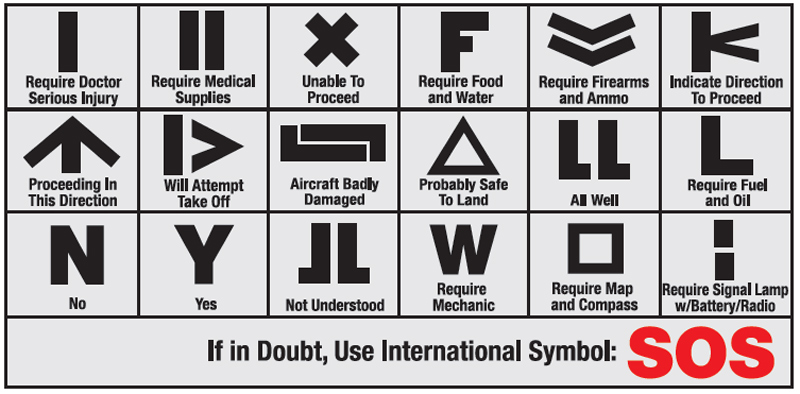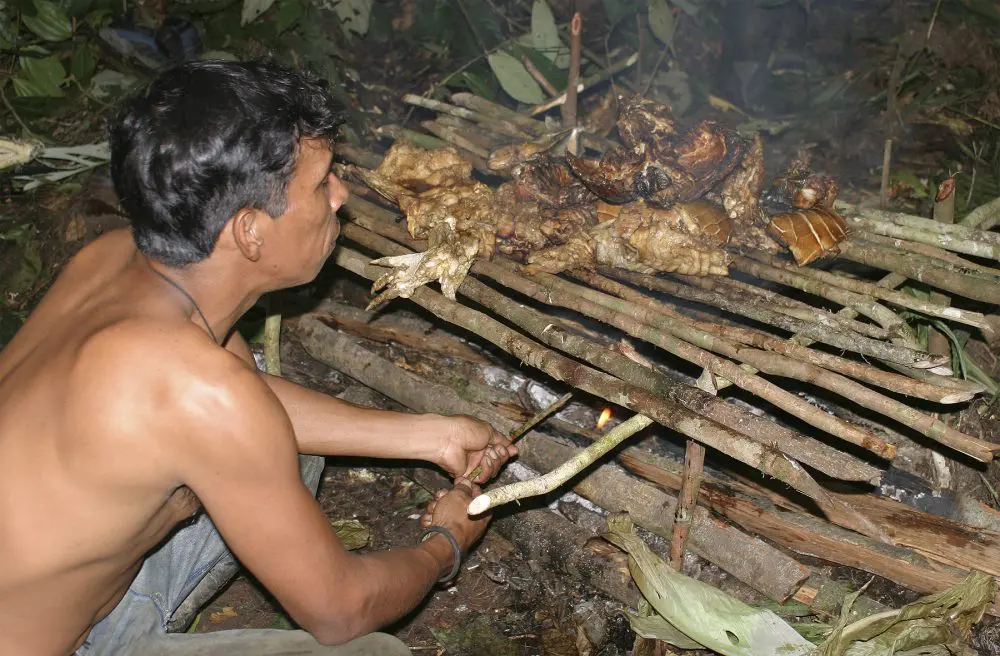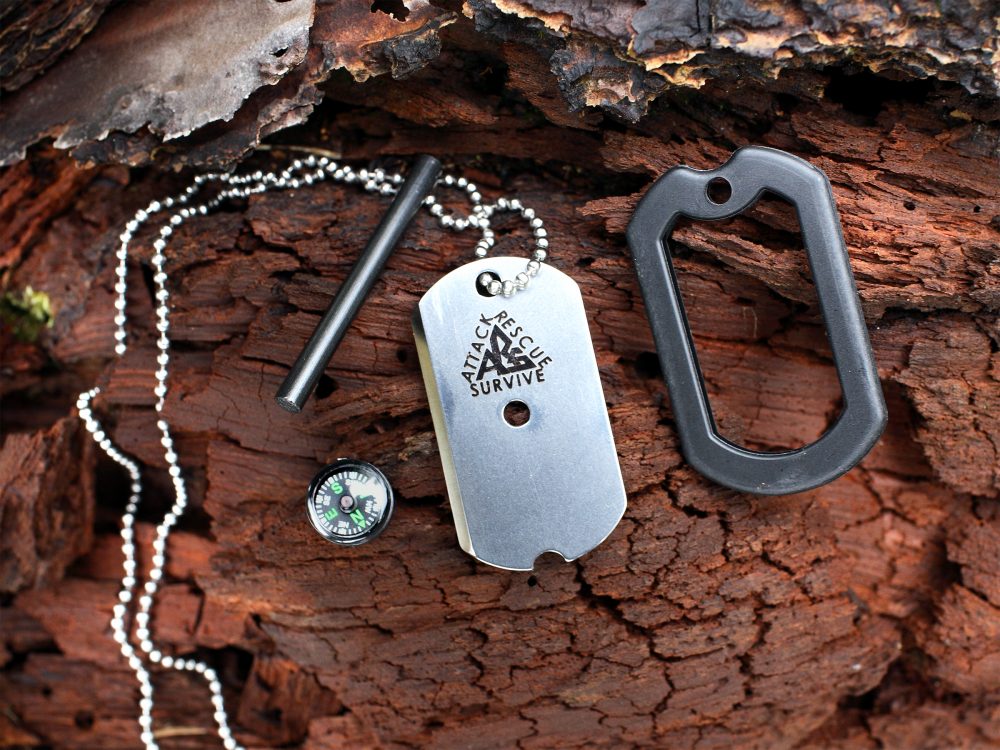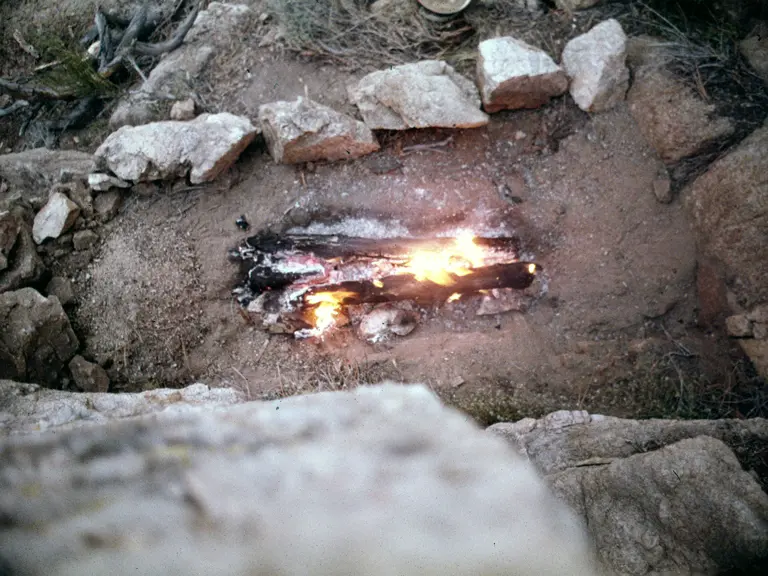IT’S not just outdoorsmen who find themselves lost in the woods. A great number of fatalities that occur in the outdoors are people who were just passing through on a road trip and maybe due to vehicle malfunction they ended up stranded and stuck someplace remote. They may not be geared up with the latest greatest signaling mirror or whistle, but that doesn’t mean they are unable to signal.
Color, contrast, movement, and sound are the four basic elements of proper signaling.
Table of Contents
KITS
When purchasing or putting together a survival/emergency kit, there are two things you should be redundant with: fire and signaling. Have at least two ways of signaling for help, such as a signaling mirror and a whistle.
Flares and smoke signals can also be obtained, but the more portable tools are convenient and therefore carried. Knowing how to use a signaling mirror and whistle won’t do any good unless they’re on you, in pockets or clipped on via a carbineer. They do nothing for a person if they’re not readily available— they don’t belong at the bottom of a pack.
No one who owns a cell phone should venture on a trip either in the city or the wilderness without it—not for texting friends or playing Angry Birds, but for the resources it offers. If you are lost or injured, try to use the cell phone. While there are parts of the wilderness that offer no cell signal, a ridge comes up and all of a sudden—full service. Some mountain peaks, like the highest hiking trail in the U.S. on California’s Mount Whitney, have great cell phone signals.
Several months ago, there was a news report of a hiker who was lost in the mountains and rescued by using the light of his cell phone. Around dusk, rescuers saw it flashing, and that was the end of the ordeal.

THE UNIVERSAL THREE
Three of anything is the universal distress signal. When heard, it will let people know that someone is in some sort or trouble, be it lost or injured. Three blows of a whistle, gunshots, bangs on an airplane wing or vehicle hood with a stick, signal fires, toots of an air horn, flashes of a light, hits on the buttresses of large trees in a rainforest, or honks of a car horn, are all examples of signaling using the succession of three.

BE A MACGYVER
Take inventory of what you have on your person and around you. Hubcaps, aluminum foil, watch faces, belt buckles, bottoms of aluminum cans, CDs, reflective dashboard covers, and car mirrors are all usable tools for signaling. For the ladies, I have never known one to hike or backpack without some makeup, and here is where a compact could prove to be an asset. Also, let’s not rule out bright lipstick, which can be used to write notes on rocks or trees utilizing color and contrast.
DON’T BE BLAND
Dress to attract attention. I can’t count how many times I’ve been to survival training courses and seen students geared up in digi-camouflage. I’m sure at some point this seemed like a great idea to them, but if they get lost or have a fall they can’t get up from, they will be nearly impossible to see.
Outdoor apparel colors tend to be shades of brown and green. If you are out paintballing or hunting, go for it. However, it wouldn’t hurt to throw something in your pocket that, colorwise, has no earthly business being there. People don’t generally notice what is common, but they do see the uncommon, and we are a curious species. A person walking around wearing bright colors is covering three of the four elements of signaling at the same time—color, contrast, and movement.
Nothing screams, “Here I am!” louder than the color orange. There’s a reason why hunters and crossing guards have orange vests—they want to be seen. Coast Guards around the world have adopted this universal color of safety, as well as cruise ship rescue boats, life rafts, and life vests. Many outdoor products, including fire steels, emergency shelters, whistles, and waterproof match holders have gone orange.
Backpackers’ tarps and packs are usually offered in subdued colors to blend in with the wilderness. Screw that! Get a bright blue pack, tarp or hat and be bold. Dare to offend the bush hippies—it could mean your life.

“manmade,” since nothing in nature has such a vivid color.
FIREBALL
“Fireball” is survival lingo for the intensely bright circular ball of light produced by the sun’s reflection from a mirror.
To use a signaling mirror, grasp it and make sure not to block any of the reflective surface. Making a V with the opposing hand’s thumb and index finger, move the mirror around to find the reflection on your hand. With the target in between the V, move the fireball, flashing the target by tilting and turning the mirror.
If the sky is gray, a signal mirror is almost useless, therefore use sound. A whistle is a great way to signal in fog or a blizzard.
SIGNAL FIRE
Besides a large bill for battling a forest fire, the amount of damage to the forest and one’s self must be taken into consideration if you use a fire to signal.
To properly use fire as a means of signaling, make sure to do so in an area void of extra debris that may create a full-blown forest fire. Create three separate fires, preferably in a triangular shape and 15 to 20 feet apart, so as not to confuse a passing airplane with three fires in a straight line built too close together. From the sky, they might look like one fire.
In a green forest, use green vegetation to produce white smoke, which is both movement and contrast.
In the snow, desert or on a beach, it’s a little more difficult to create contrast with smoke. This is where creativity and resources come into play. To contrast with the terrain, create black smoke with rubber from a Ranger band, inner tube, oil, petroleum, plastic bottles, picnic cutlery, or even a boot.

X MARKS THE SPOT
There are many ground-to-air signals, but for simplicity, the one to know is X. It means unable to proceed. That means I need help—not a doctor, supplies, map and compass, or a Coke, but help! In order for it to be seen from up high, construct the X from branches, logs, rocks, or whatever is available. Make it between 15 and 20 feet long and use the rules of color and contrast when possible.
Not everybody is comfortable spending the night outside, especially if it isn’t a planned camping trip. If you can’t find your way back to your destination, signaling may be the next best option when and if you are Against All Odds!





